26 Best Foods to Eat in Japan
Try the Best Foods to Eat in Japan and embark on a culinary adventure like no other. Japan is renowned for its diverse and delectable cuisine that caters to all taste buds. From sushi and ramen to sweets and street foods, trying the local specialties is one of the most memorable parts of any trip to Japan. Here are 26 of the best foods you must try when visiting this incredible country.
1. Sushi

When you visit Japan, sushi is undoubtedly one of the top foods to try. This iconic Japanese dish has become synonymous with Japanese cuisine and is a reflection of the country’s rich food culture. One of the most famous Japanese dishes around the world is sushi. While raw fish may not be for everyone, sushi offers such a variety of ingredients and presentations that there is something for every taste.
From simple nigiri topped with uni (sea urchin) or sake (salmon) to creative rolls stuffed with tempura or avocado, sushi is truly an art form. Tokyo, Osaka and Kyoto are just a few cities known for their top-notch sushi restaurants.
A visit to Japan would be incomplete without experiencing the exquisite artistry and culinary perfection of sushi, making it a must-try food for every traveler.
2. Ramen
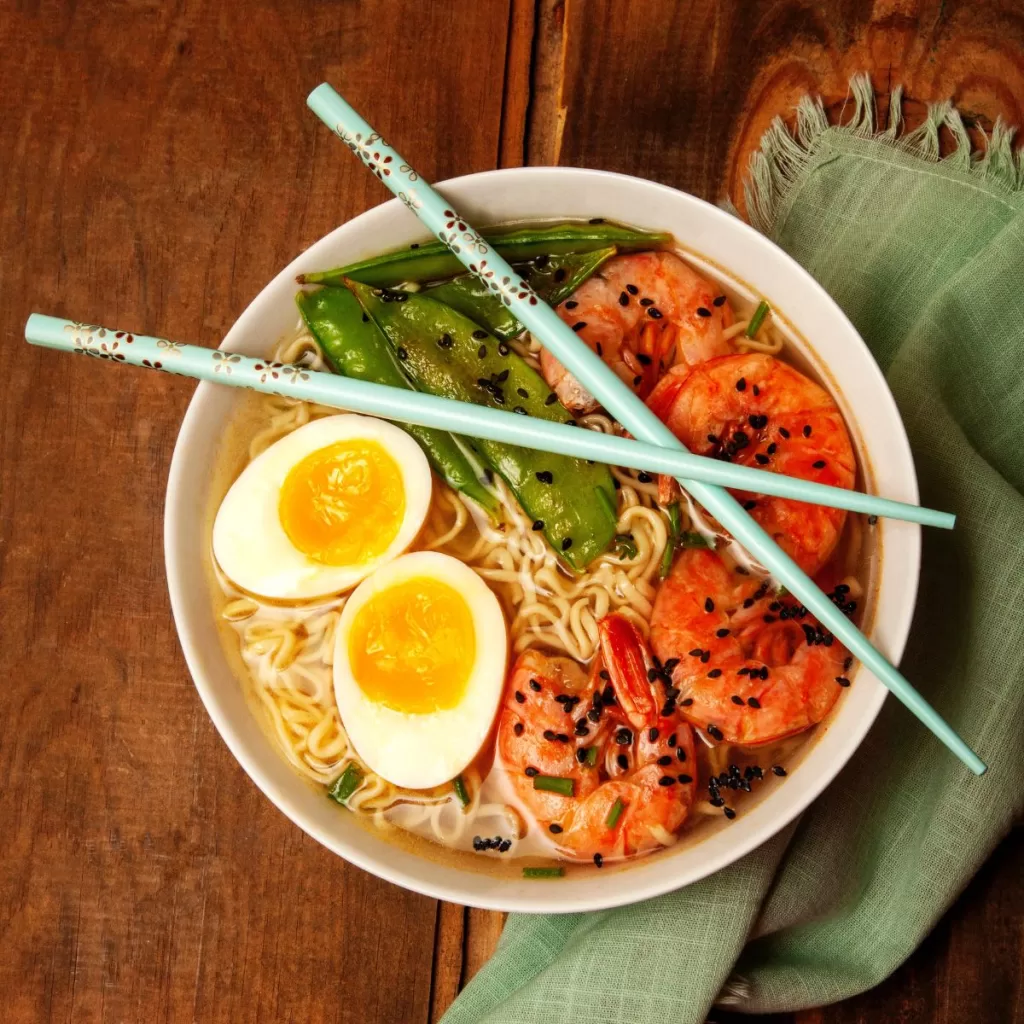
Ramen holds a special place in Japanese food culture and is considered one of the most beloved and popular Japanese dishes. Originating from China, ramen has evolved over the years to become a staple of Japanese cuisine. Ramen in Japan consists of wheat noodles served in a flavorful broth, often topped with various ingredients such as sliced pork, soft-boiled eggs, seaweed, and green onions.
While Japan is known for its variety of regional ramen styles, some popular varieties include shio (salt-based broth), shoyu (soy sauce-based broth) and miso ramen. Ramen is often sold as street food at shops throughout cities like Tokyo and Osaka and makes for a quick and comforting bite to eat any time of day.
Ramen has gained global popularity, and you’ll find numerous dedicated ramen restaurants in Japan, ranging from tiny local shops to large ramen chains. These restaurants often specialize in specific types of ramen, allowing visitors to sample and savor various regional flavors.
If you’re a fan of noodles and seeking an iconic and fulfilling food experience in Japan, trying different types of ramen is a must-do activity.
3. Okonomiyaki
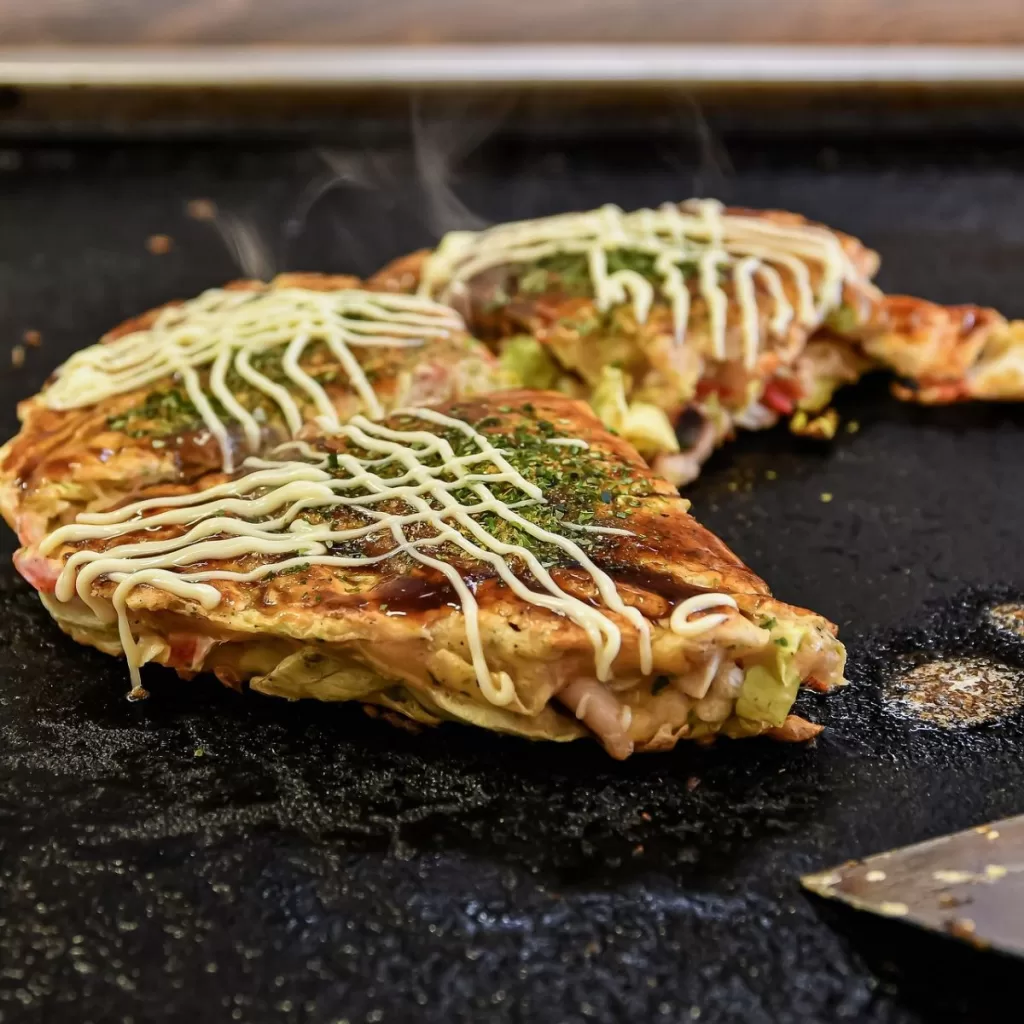
Okonomiyaki is a unique and flavorful dish that you need to try when visiting Japan. It is a savory pancake-like creation that has gained popularity both domestically and internationally.
A savory pancake stuffed with cabbage, noodles and your choice of meat and seafood, topped with a fried egg and sweet Worcestershire-style sauce. Okonomiyaki hails from Western Japan, with variations between thin ‘Osaka-style’ and thick ‘Hiroshima-style’. It’s the perfect sharing dish, often enjoyed at restaurants and food stalls where you cook it yourself on a griddle at your table.
Okonomiyaki is enjoyed in Japan by people of all ages and is a beloved street food and comfort food option. It is commonly found in specialized okonomiyaki restaurants or at festivals and food stalls. Trying this dish is a delightful way to indulge in a typical Japanese culinary experience and appreciate the diverse flavors and textures that make up the country’s food culture.
4. Yakitori
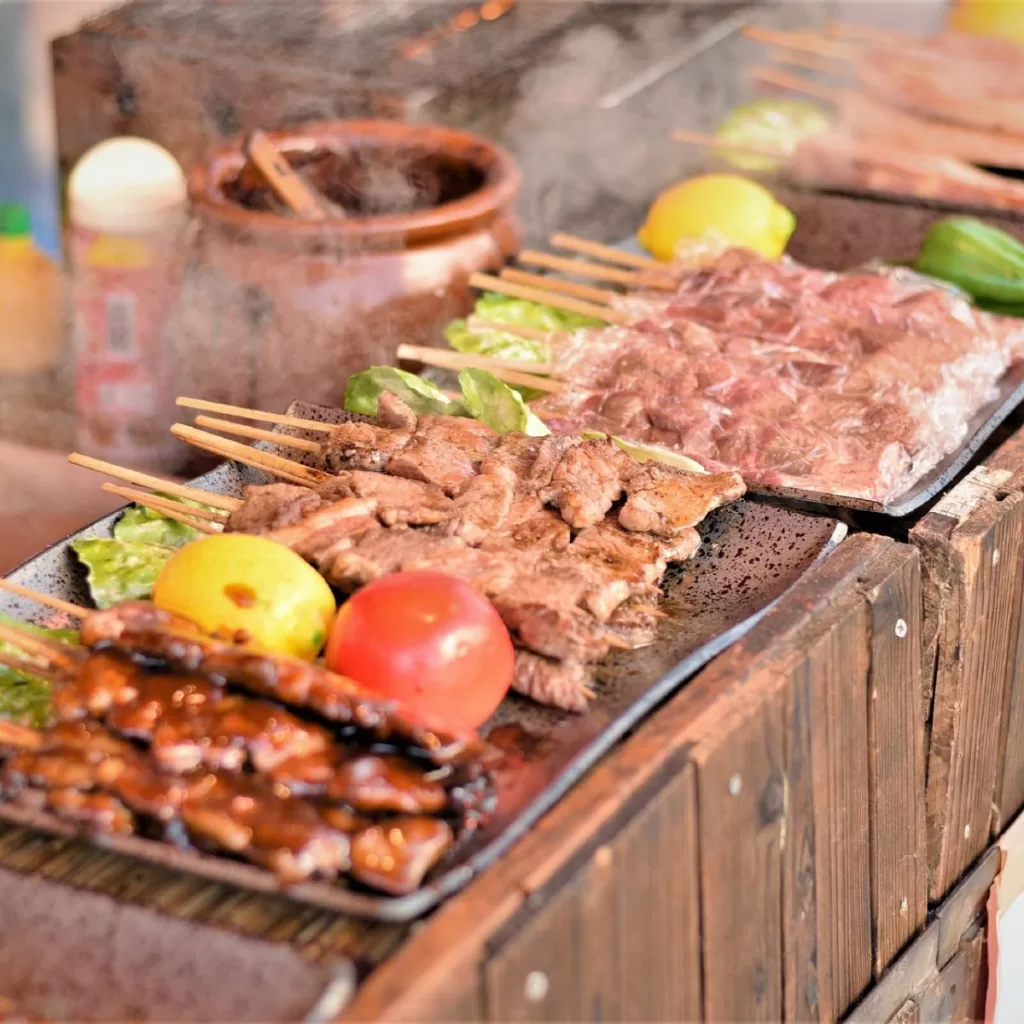
Yakitori is a delectable dish that holds a significant place in Japanese cuisine. Commonly found in izakayas, traditional Japanese restaurants, and street food stalls, yakitori consists of skewered and grilled chicken, enjoyed as a main course or as a side dish. It is a favorite among the Japanese people, known for its simple yet flavorful preparation.
Made from choice cuts of chicken meat, skin and liver, yakitori skewers are brushed with flavorful tare sauce as they grill. Accompanied by cold beer, yakitori is a popular late-night indulgence served at small izakaya (Japanese pubs). Beyond major cities, yakitori restaurants and stands are also found in many towns across Japan.
This food in Japan is often enjoyed with a variety of seasonings and dipping sauces, such as tare (a sweet and savory soy-based sauce), salt, or spicy variations. This allows you to customize the flavor to your preference, making it a versatile dish that can suit various preferences. It’s definitely one of the best Japanese foods to try in Japan.
5. Soba
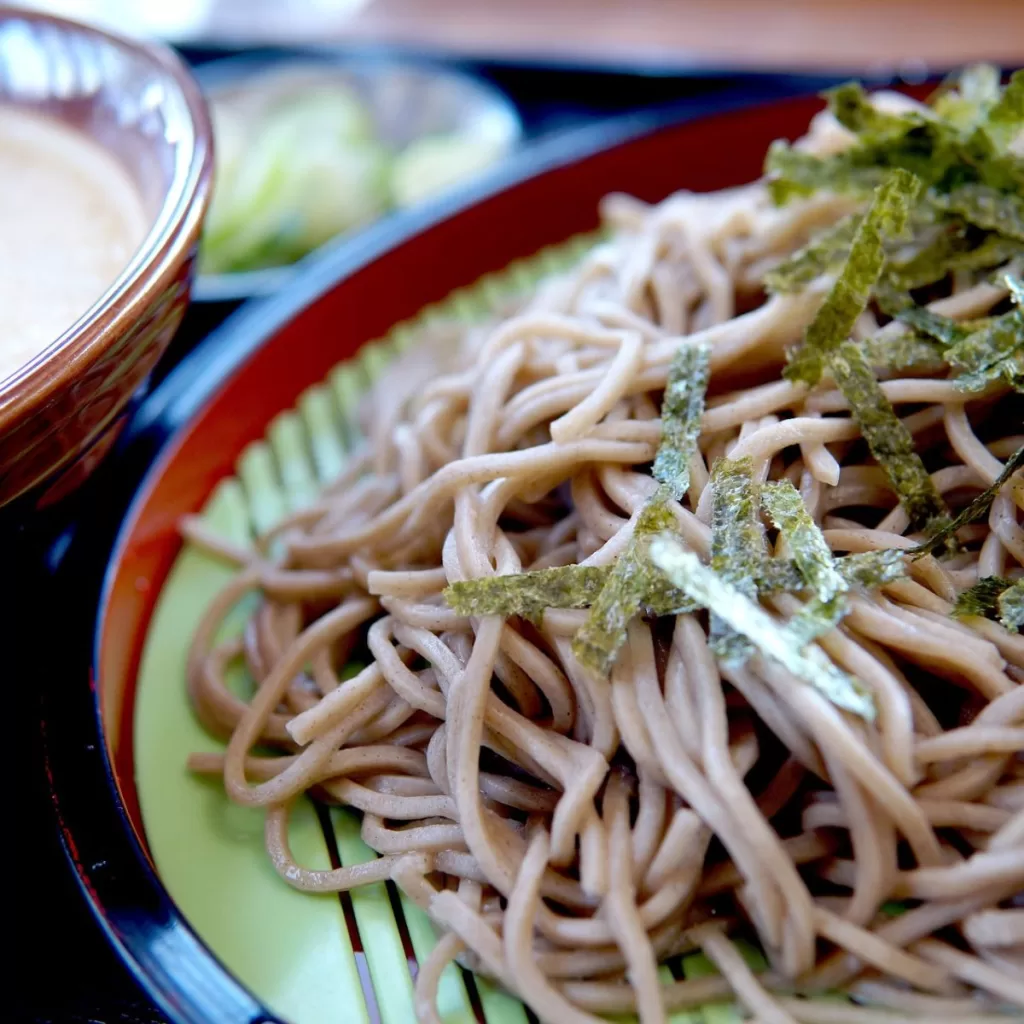
A type of Japanese noodle that holds a special place in Japanese cuisine. Soba refers to thin buckwheat noodles. Made from buckwheat flour, soba noodles have a distinct nutty flavor and a slightly chewy texture, making them a favorite dish for many Japanese people and visitors alike. Soba can be enjoyed in a variety of ways, making it a versatile and highly regarded dish to try in Japan.
The most common variety is cold soba served during warmer months in a light, refreshing broth with ingredients like tempura or sliced scallions.
Hot soba nabe is a hearty winter soup made with a variety of ingredients like mushrooms, seafood and vegetables simmered with soba. Soba restaurants can be found across Japan but Nagoya is particularly famous for this local specialty. Japan is one of the best places to savor authentic soba, with dedicated soba restaurants, known as sobaya, found throughout Japan.
6. Oden
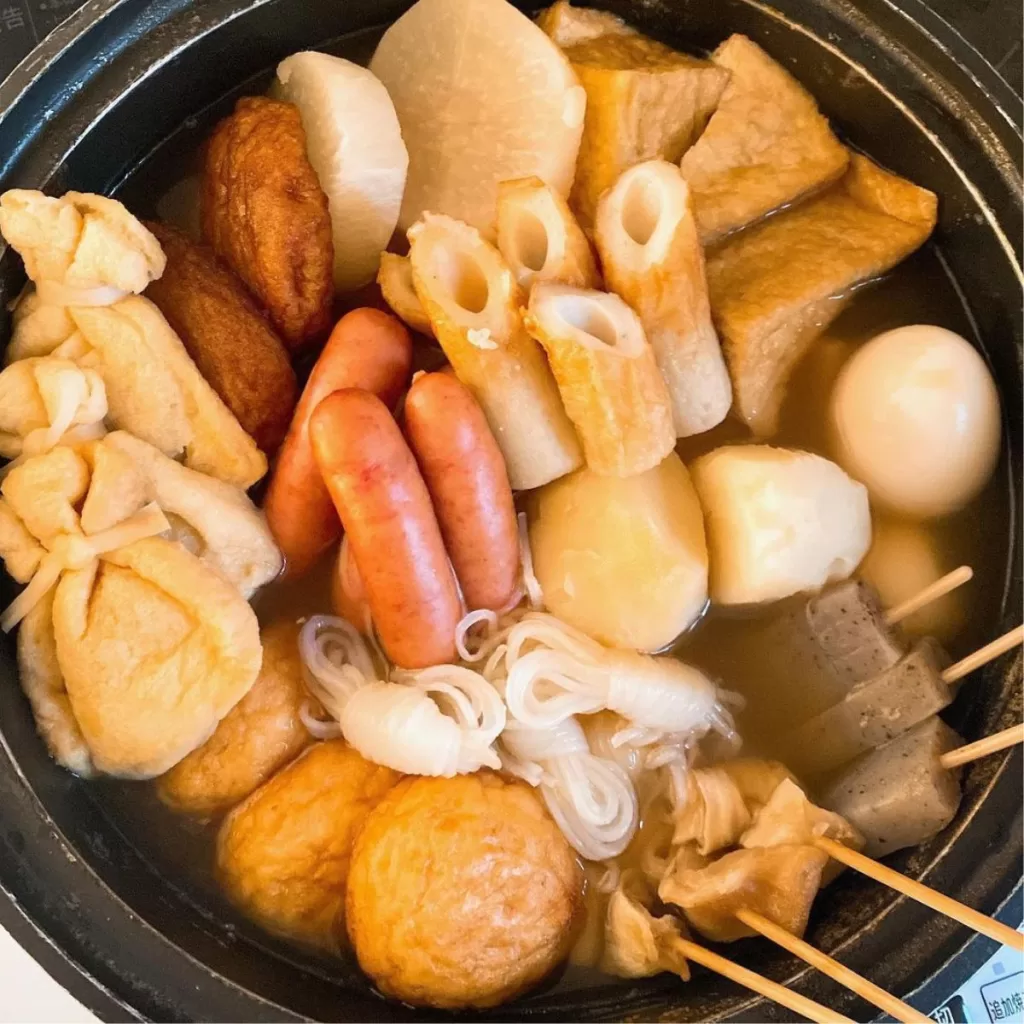
Oden is a traditional Japanese food that is often enjoyed as a comforting and hearty dish in Japan. It is a popular addition to a traditional Japanese meal, particularly during the colder months. Oden consists of various ingredients such as daikon radish, konnyaku (devil’s tongue jelly), boiled eggs, tofu, fish cakes, and other simmered ingredients, all cooked together in a flavorful soy-based broth.
A Japanese winter street food staple, oden is a hearty stew of fish cakes, vegetables and eggs simmered in a light, savory broth. Sold from stalls on colder nights, oden makes for a filling, comforting meal. Look for oden vendors throughout cities and towns from late fall through early spring.
7. Taiyaki
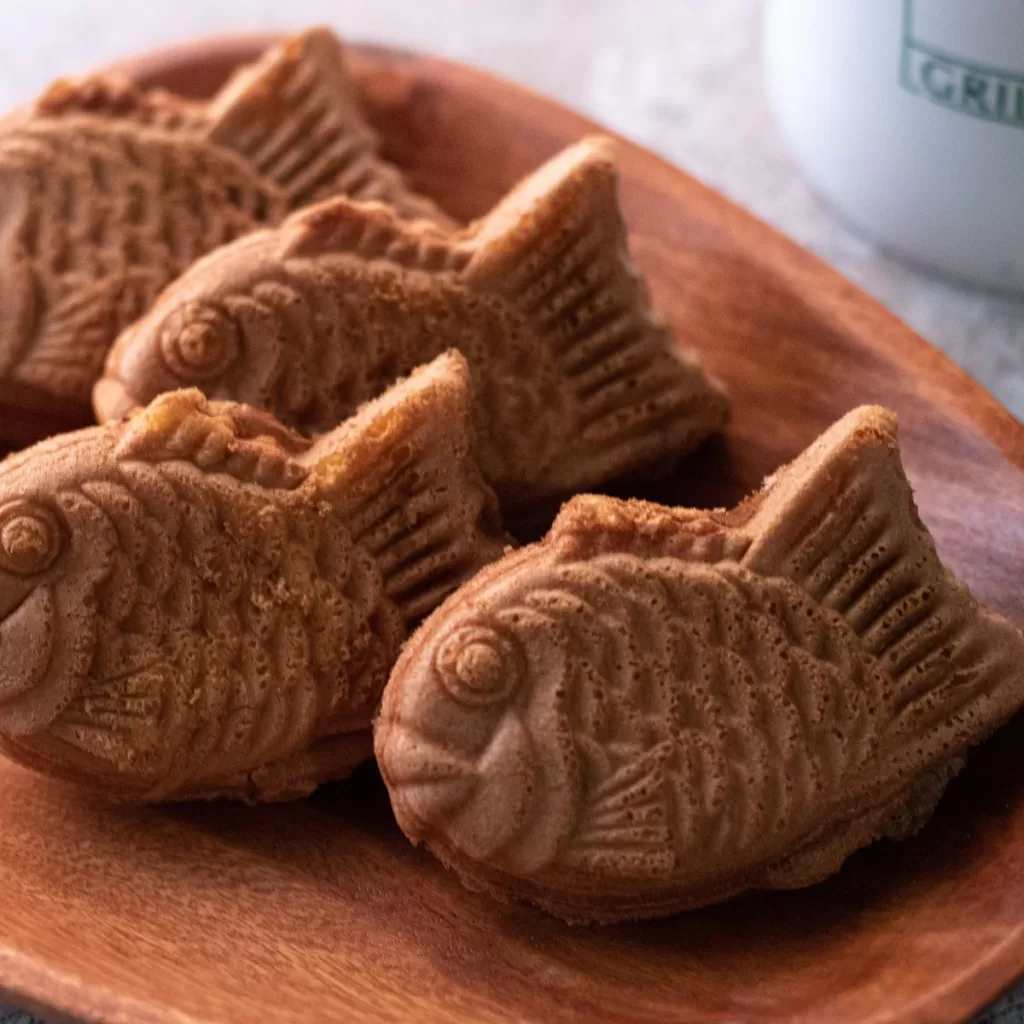
An iconic Japanese snack shaped like a sea bream with a pastry shell and filled either sweet or savory. The most popular fillings are red bean paste or custard cream but savory versions may contain things like minced chicken. Taiyaki is sold all year round from bakeries and street carts, especially near train stations on weekday afternoons as an on-the-go treat.
Taiyaki is widely available throughout Japan, from street food stalls to dedicated taiyaki shops. It is often enjoyed as a snack or dessert, attracting people of all ages with its charming shape and delicious taste. Whether you’re exploring the bustling streets of Tokyo, wandering through historic Kyoto, or visiting any other city in Japan, taiyaki is a must-try dish that will leave a lasting impression on your taste buds.
When planning your next trip to Japan, be sure to put taiyaki on your list of foods to try. It’s not only a tasty treat but also a cultural experience that allows you to indulge in one of Japan’s beloved culinary traditions.
8. Kobe Beef
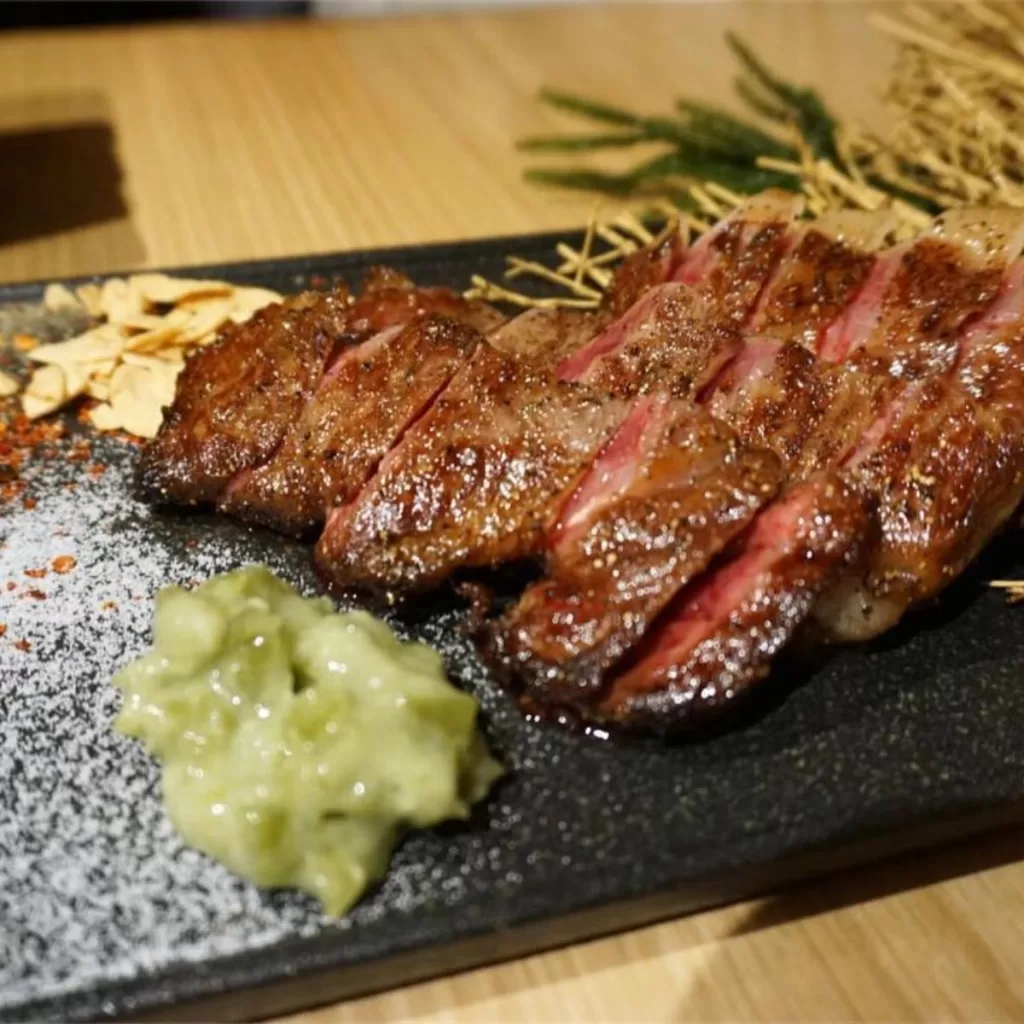
Kobe beef is renowned as some of the highest quality beef in the world due to the breed of Wagyu cattle from Hyogo Prefecture and their pampered lives eating grain and mineral supplements.
Known for its intense marbling and melt-in-your-mouth tenderness, premium Kobe beef is served simply as sashimi or in hot stone cooking known as sukiyaki and shabu shabu. Budget for a splurge Kobe meal when planning a trip to Japan.
9. Tonkatsu

The Japanese took the original British pork cutlet recipe and made it their own. Breaded and deep-fried pork cutlets, known as tonkatsu, are served with a thick, savory sauce or as part of a full dinner set.
Champion cutlets at specialty tonkatsu restaurants have rendered fat running off the sides, crispy edges and a meltingly tender center. It’s handheld Japanese comfort food at its finest.
Tonkatsu is a popular and satisfying dish in Japan that showcases the art of deep-frying and the balance of textures and flavors. Its crispy exterior, tender pork, and flavorful sauce make it a beloved comfort food option for many. Whether enjoyed at a specialized Tonkatsu restaurant or made at home, Tonkatsu remains a classic and tantalizing choice for Japanese cuisine enthusiasts.
10. Unagi
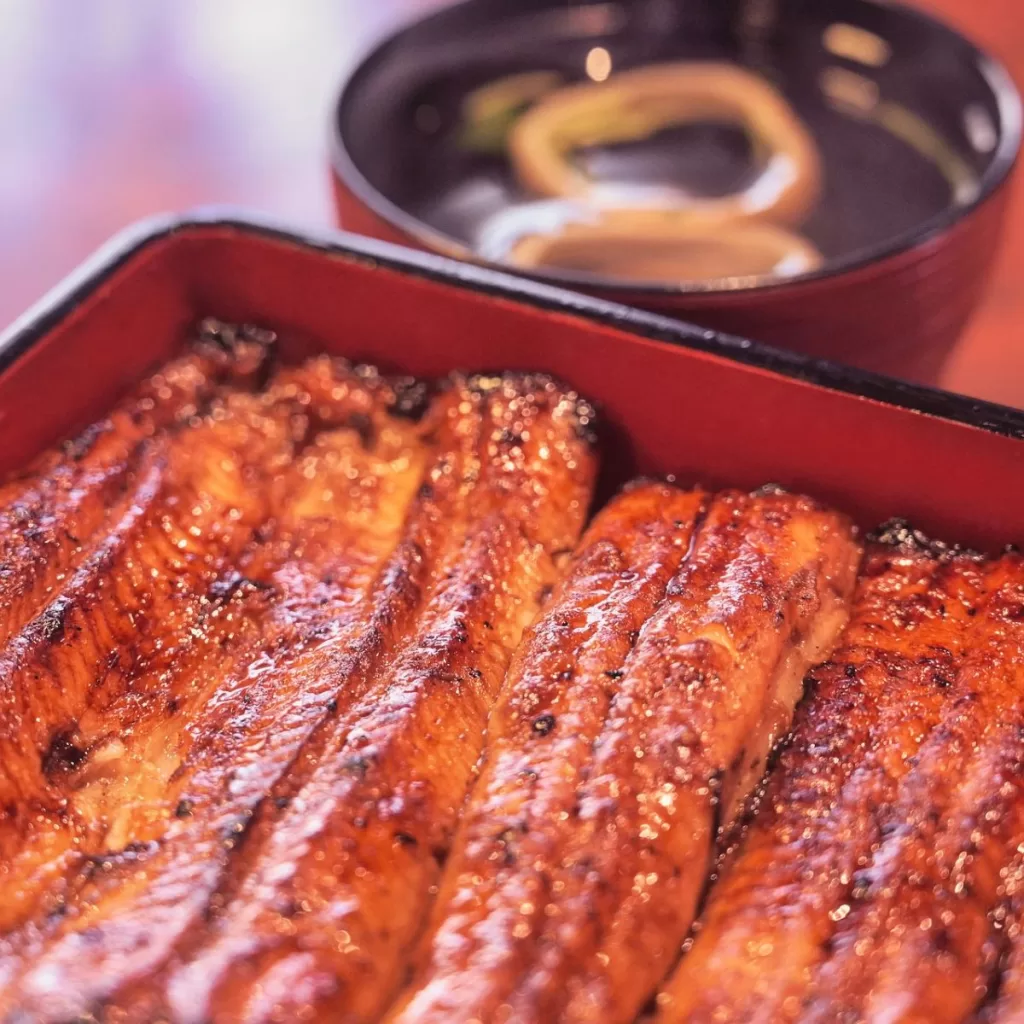
Grilled freshwater eel, or unagi, is a popular summer seasonal treat. A whole or fillet of eel is basted with a rich, slightly sweet glaze before and after grilling. Most famous is kabayaki unagi served over sushi rice. Beyond restaurants, unagi kabayaki skewers are also sold from beach and festival stalls during warmer months.
Unagi is highly regarded not only for its taste but also for its nutritional benefits. High in in omega-3 fatty acids, vitamins, and minerals, it is considered to be a healthy protein source. Unagi also contains a unique type of gelatin called mucin, which is believed to have a positive effect on skin health.
11. Miso Soup

Miso soup is not only delicious but also offers several nutritional benefits. Miso is rich in essential amino acids, vitamins, and minerals. It is a source of probiotics and enzymes, which support gut health and digestion.
Additionally, the ingredients used in miso soup, such as seaweed and tofu, provide additional nutrients like iodine, calcium, and protein. Miso soup is often seen as a nourishing and comforting dish, especially in colder months.
Miso soup holds cultural significance in Japan and is deeply ingrained in daily life. It is a part of the traditional Japanese breakfast, along with steamed rice and grilled fish. Miso soup is also served with lunch and dinner, accompanying a variety of main dishes.
12. Tempura
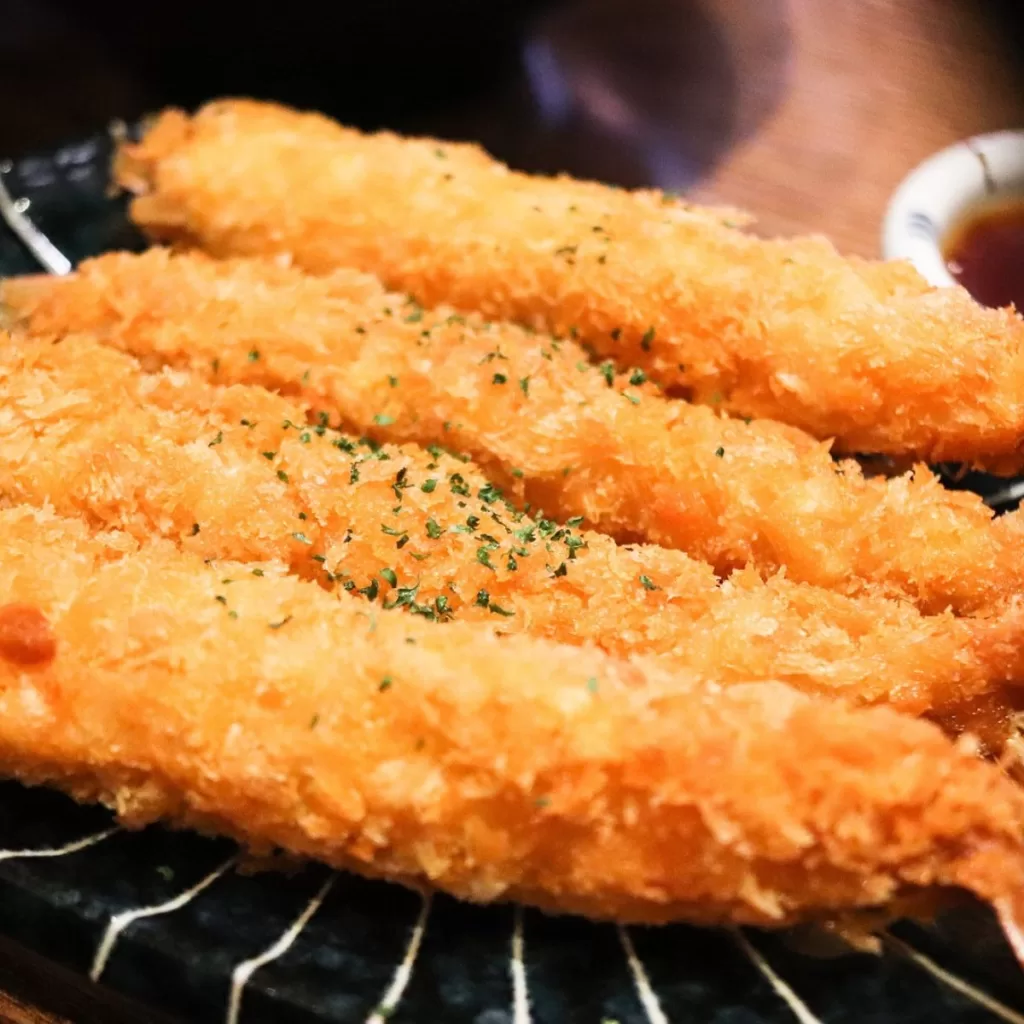
Light and crispy tempura uses fresh, seasonal vegetables like sweet potato, and spinach that are battered and deep-fried to create something both healthy and decadent. Ordered on its own or as part of a bento, tempura makes for a filling, satisfying lunch or dinner option. Tempura flourishes seasonally across Japan but gets special treatment in coastal cities like Osaka.
Tempura is typically served with a dipping sauce called tentsuyu, made from a mixture of soy sauce, mirin (sweet rice wine), and dashi (a stock made from dried fish and kombu seaweed).
Whether enjoyed as a snack, part of a meal, or even in the form of tempura-don (tempura served over rice), this iconic dish offers a delightful combination of taste, texture, and visual appeal.
13. Matcha Sweets
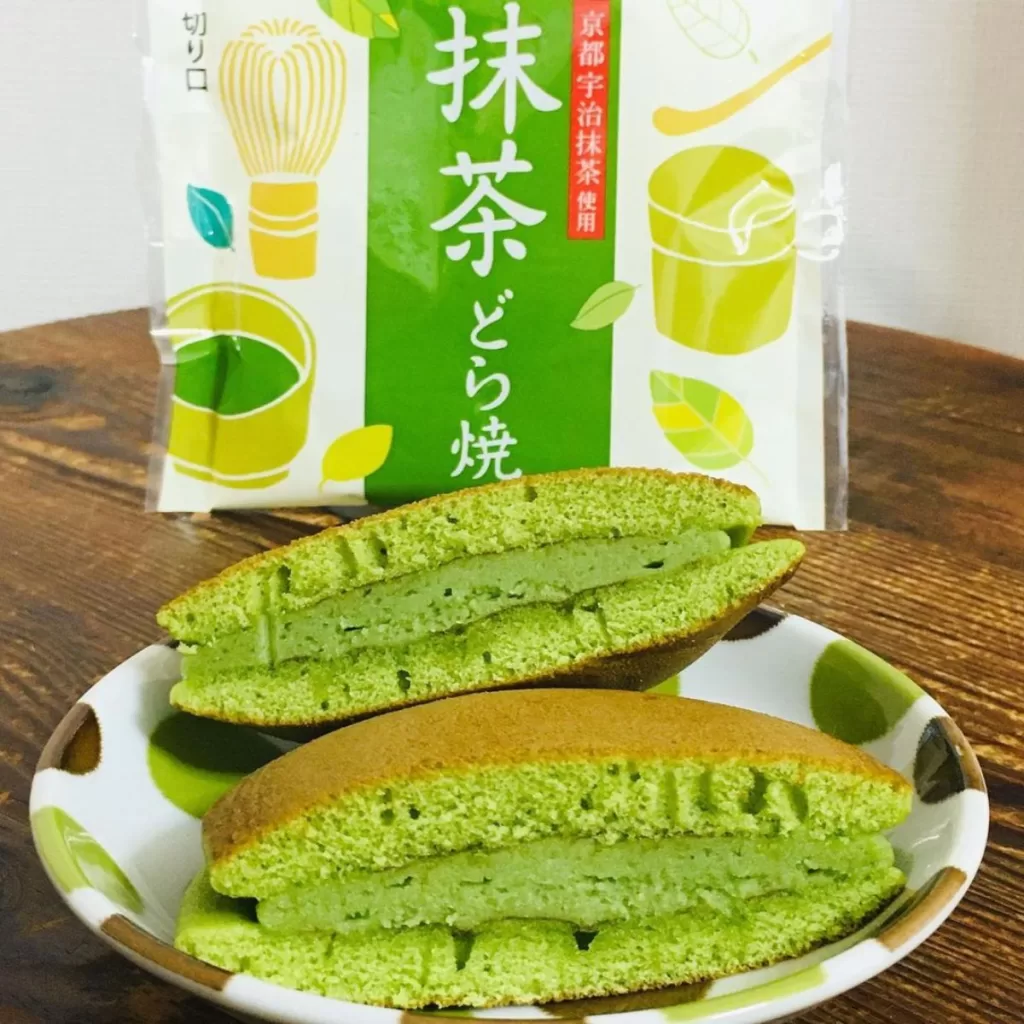
Powdered green tea known as matcha is widely used to flavor and color Japanese sweets like manjū, dorayaki, and mochi. Matcha sweets range from soft cakes and buns to masticated rice treats with a subtle yet distinctive taste.
Pre-packaged matcha snacks and traditional wagashi confectionaries can be found year-round but summer is peak season for sampling fresh-made varieties.
14. Castella Cake
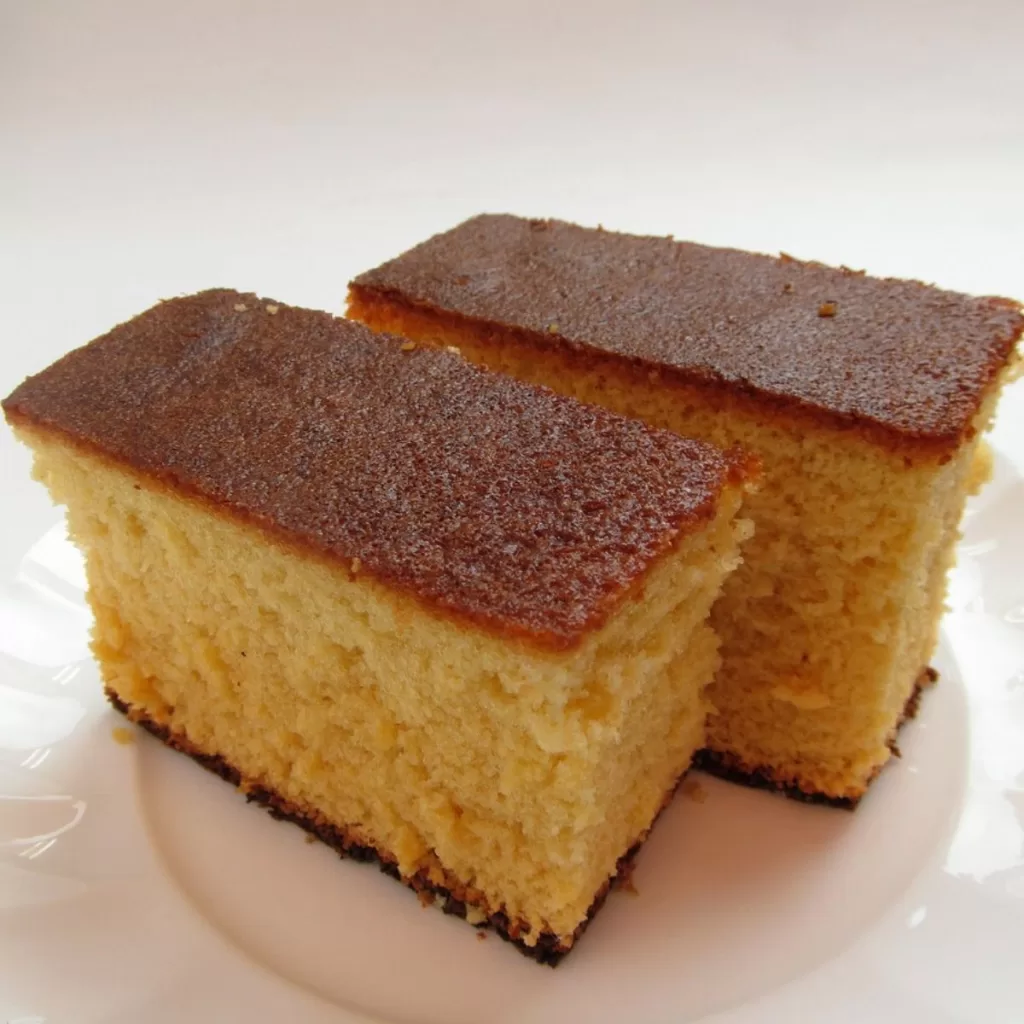
Castella cake is a traditional Japanese sponge cake that is considered one of the best things you can find in Japan. It is a classic Japanese sponge cake introduced by Portuguese merchants. The yellow layered cake has a crisp texture on the outside and soft crumb within. Slices are often given as small gifts or sold wrapped individually from bakeries. Beyond major cities, castella and other Western-style sweets still play an integral role in Japanese regional confectionery traditions.
Castella cake is a food you should try when visiting Japan. It is widely available in different variations and flavors, such as original, green tea, or even matcha-infused. Whether enjoyed as a dessert with a cup of tea or as a sweet treat on its own, Castella cake offers a delightful combination of simplicity and deliciousness.
15. Wagashi
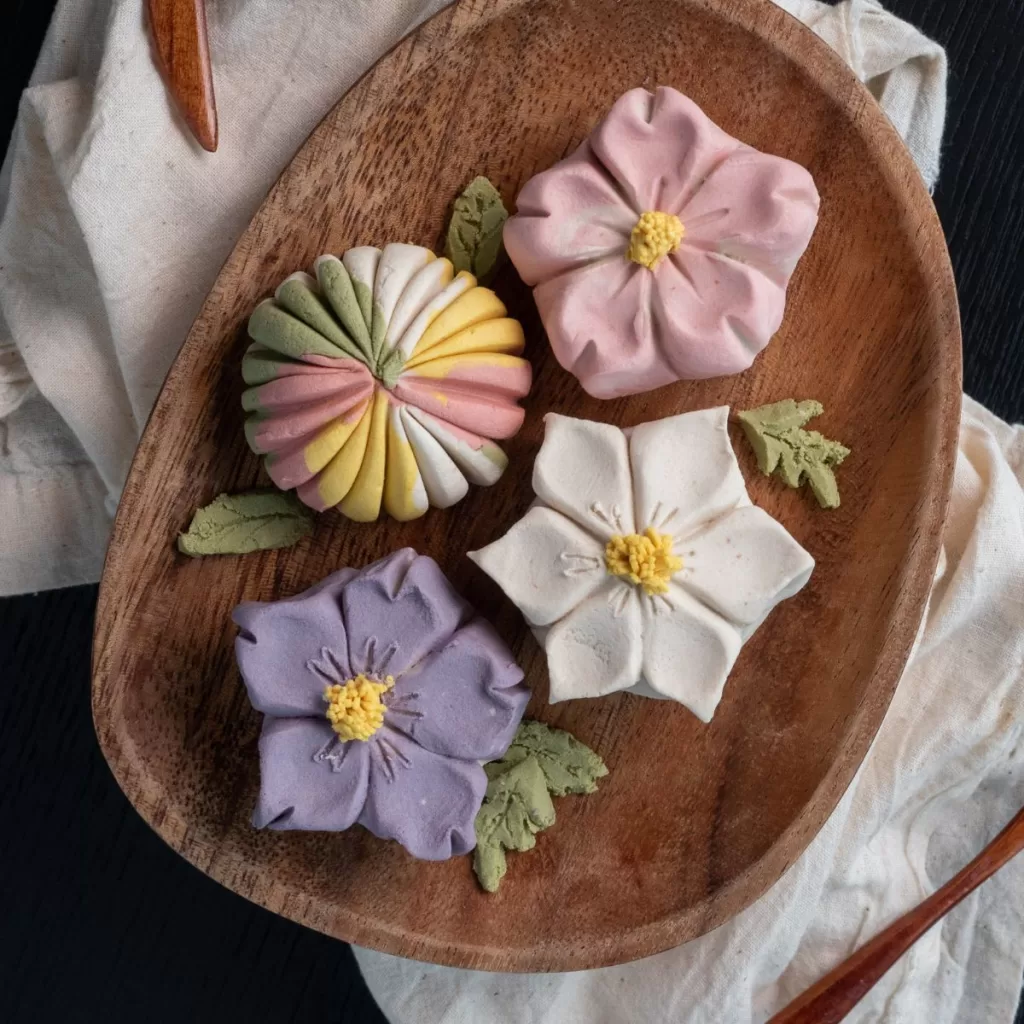
Wagashi is a traditional Japanese confectionery that is considered one of the best things you can find in Japan. Wagashi comes in a variety of shapes, colors, and flavors, reflecting the changing seasons and the beauty of nature.
These traditional Japanese sweets use ingredients like red bean paste, Chestnuts and agar to create pretty, seasonal confections often created in shapes that reflect the time of year.
Wagashi are an important part of the tea ceremony and presentations of Japanese sweets involve as much creativity and artistry as the treats themselves. Head to specialty kyaraben shops to see wagashi artistically arranged for picnics or gifts.
16. Tsukudani

If you’re planning a trip to Japan and want to explore the local cuisine, one thing you should definitely try is Tsukudani. Tsukudani refers to a cooking technique where food is simmered and preserved in a sweet and savory soy sauce-based glaze.
Seafood or vegetables such as shiitake mushrooms are simmered for hours in a seasoned broth of soy sauce, mirin and sugar. The result is intensely aromatic and flavorful preserved foods known as tsukudani that are eaten plain as a condiment or added to rice balls for a savory snack. Finding regional specialties of tsukudani makes for unique edible souvenirs from your Japan travels.
You can find Tsukudani in specialty shops, local markets, Japanese convenience stores, or even department stores in Japan. These small jars of preserved delicacies come in a variety of flavors, such as bonito, seaweed, or even squid. Each region in Japan may have its own specialty when it comes to Tsukudani, offering a wide range of taste experiences to explore during your culinary adventures.
17. Onigiri

Onigiri is a staple in the Japanese diet, and it holds a significant place in Japanese cuisine. These Japanese rice balls are made by shaping rice into a triangular or oval shape, often with a filling in the center, and then wrapped in nori (seaweed). Onigiri is not just a convenient and portable snack but also a versatile and customizable dish.
These triangular rice balls filled with tasty tidbits like salmon, pickled plum or umeboshi are a true Japanese convenience food. Onigiri can be found pre-made in stores, convenience stores like 7-Eleven, or sold fresh from vendors throughout the day. A handheld treat, onigiri nourishes everyone from busy urban workers to festival and hiking crowds across the country.
This Japanese style rice ball is a popular go-to option for a quick and satisfying meal or a snack on-the-go. Onigiri is widely available in convenience stores, bento shops, and even home kitchens.
18. Udon
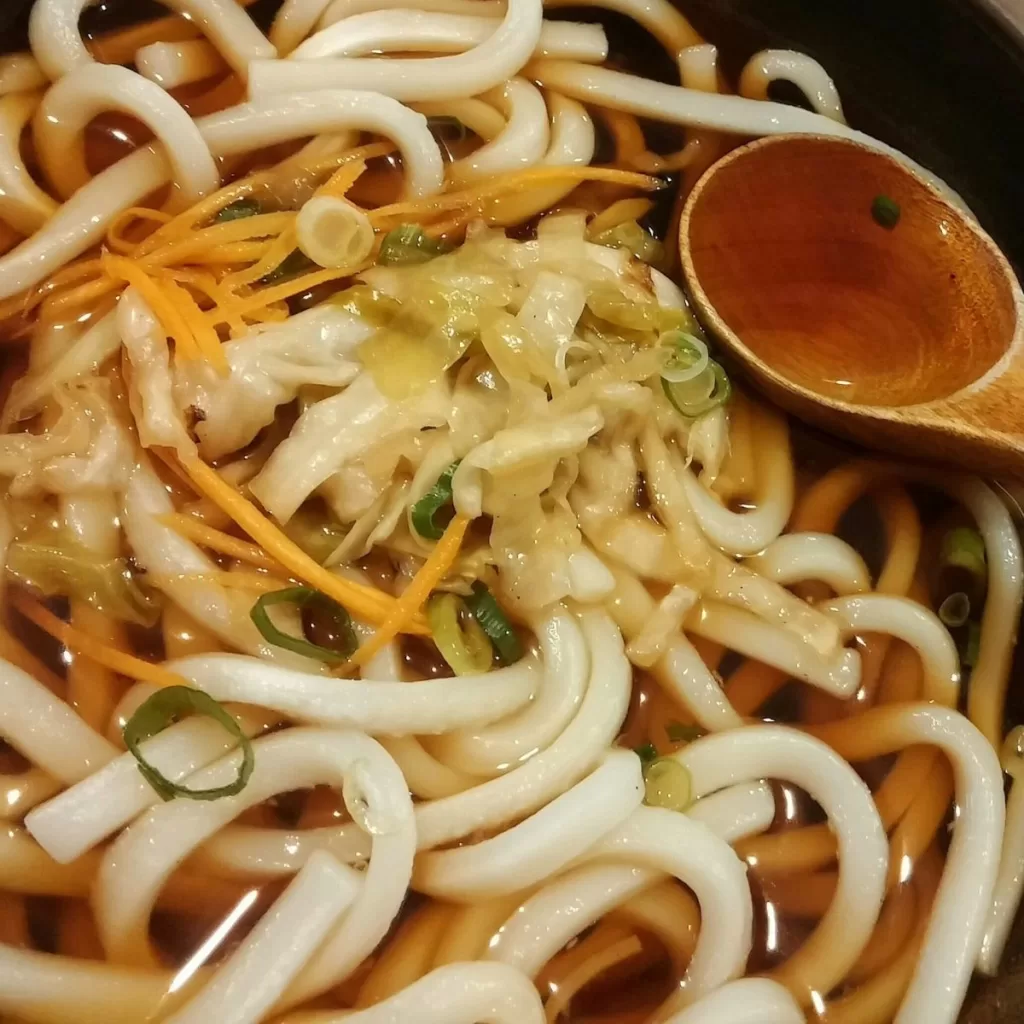
Udon is a type of thick wheat noodle that is commonly enjoyed in Japan and has gained popularity worldwide. This versatile and comforting noodle dish holds a special place in Japanese cuisine and is loved for its chewy texture and ability to pair well with various flavors and ingredients.
Udon is a highly customizable dish, allowing for a wide range of toppings and accompaniments. Popular udon variations include Kitsune Udon (topped with sweet fried tofu), Tempura Udon (served with crispy tempura), or Niku Udon (featuring thinly sliced beef). Additionally, udon can be enjoyed with green onions, kamaboko (fish cake), nori (seaweed), or even a raw egg on top.
Whether slurped hot in winter or enjoyed cold during the summer, udon offers a satisfying and hearty dining experience.
19. Yatsuhashi
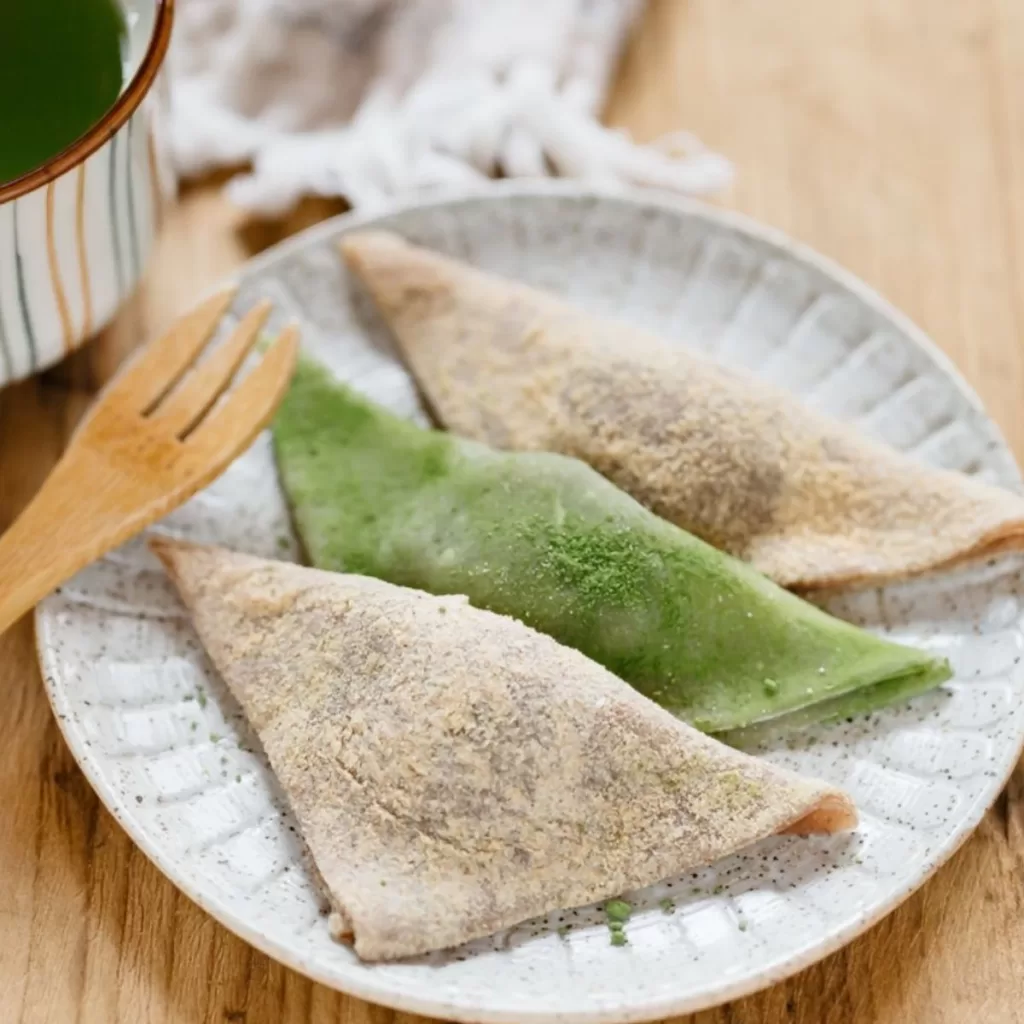
These diamond-shaped confections from Kyoto are made from mochiko (sweet rice flour) and anko (sweet adzuki bean paste). Originally made for Buddhist temple offerings, yatsuhashi are pleasantly chewy and subtly flavored. Find them individually packaged, often with cute designs, at souvenir shops or grab them as an on-the-go snack from convenience stores across Japan.
Whether you prefer the soft and chewy raw version or the crispy and fragrant baked version, yatsuhashi offers a delightful taste of Kyoto’s sweet traditions. Its combination of flavors and textures, along with the hint of cinnamon, make it a beloved treat for locals and tourists to savor and share.
So, don’t miss the opportunity to try yatsuhashi when exploring Japanese sweets and experiencing the culinary delights of Kyoto.
20. Fugu
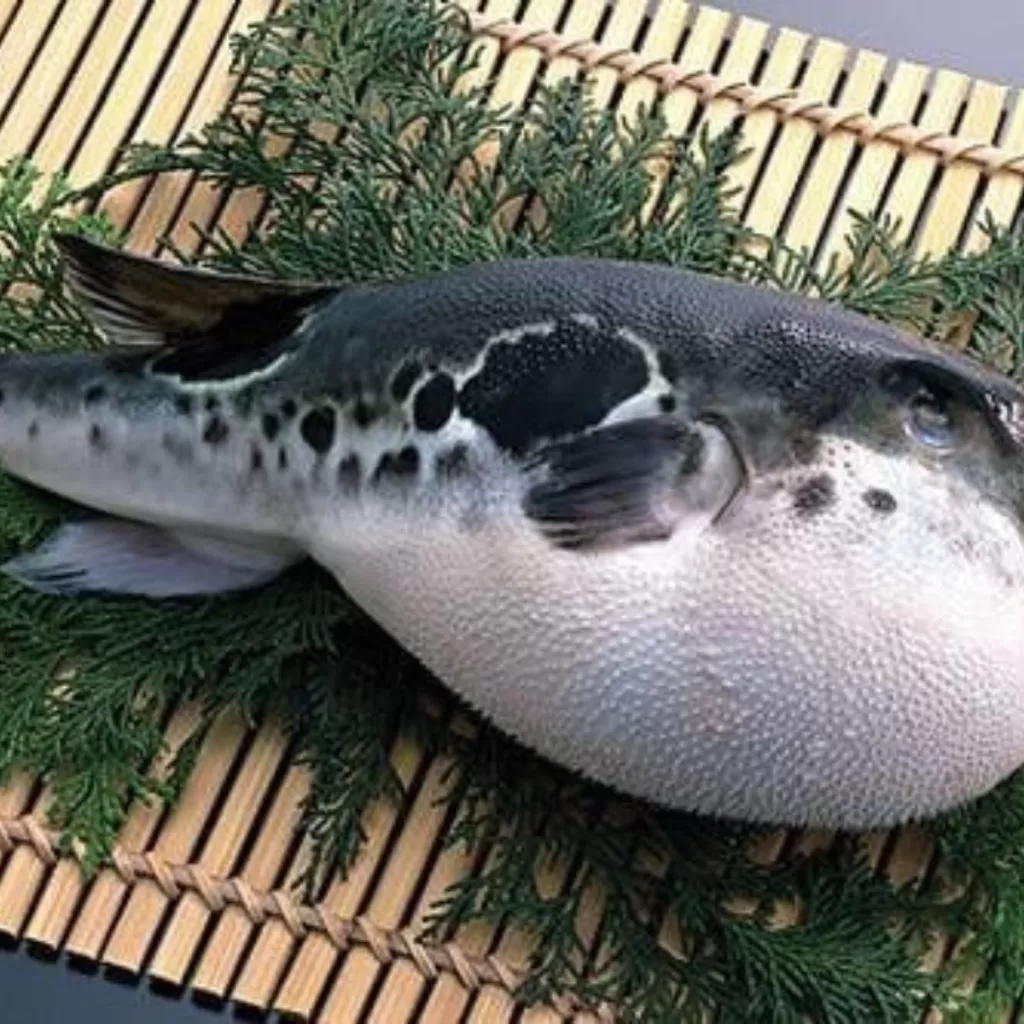
Fugu is a Japanese dish made of pufferfish. It is one of the most infamous and sought-after dishes, famous for its potentially deadly nature if not prepared correctly. Fugu is prized for its delicate and distinct flavor, which can only be savored through the expertise of skilled and licensed fugu chefs.
Fugu contains a potent poison called tetrodotoxin, primarily found in its internal organs, especially the liver and ovaries. These parts must be carefully removed during the preparation process to ensure the dish is safe to consume. Chefs who specialize in fugu undergo rigorous training and obtain a special license to guarantee the fish is prepared correctly and poses no risk to diners.
Due to its unique taste and the intricate process involved in its preparation, fugu is considered a luxurious and exclusive dining experience in Japan. It is often served in a variety of ways, including sashimi (thinly sliced raw fish), deep-fried, or in a hot pot called “fugu nabe.” The translucent slices of fugu sashimi are prized for their delicate texture and subtle flavor.
21. Takoyaki

Golden brown doughnut-shaped balls with tasty filling are a popular street food known as takoyaki. The signature ingredient is minced octopus but chicken or tempura scraps are also common. Each biteful explodes with octopus pieces tucked within a crispy fried batter coating. Takoyaki are frequently sold from carts in urban nightlife districts and a fun finger food to share.
Originating in Osaka, takoyaki has become popular throughout Japan and is enjoyed by locals and visitors alike. It is often served with a drizzle of takoyaki sauce, a sweet and savory sauce similar to Worcestershire sauce, mayonnaise, and sprinkled with dried bonito flakes and green seaweed.
Each bite offers a delightful combination of flavors and textures, with the tender octopus, savory batter, and the umami-rich sauce coming together harmoniously.
22. Gyudon
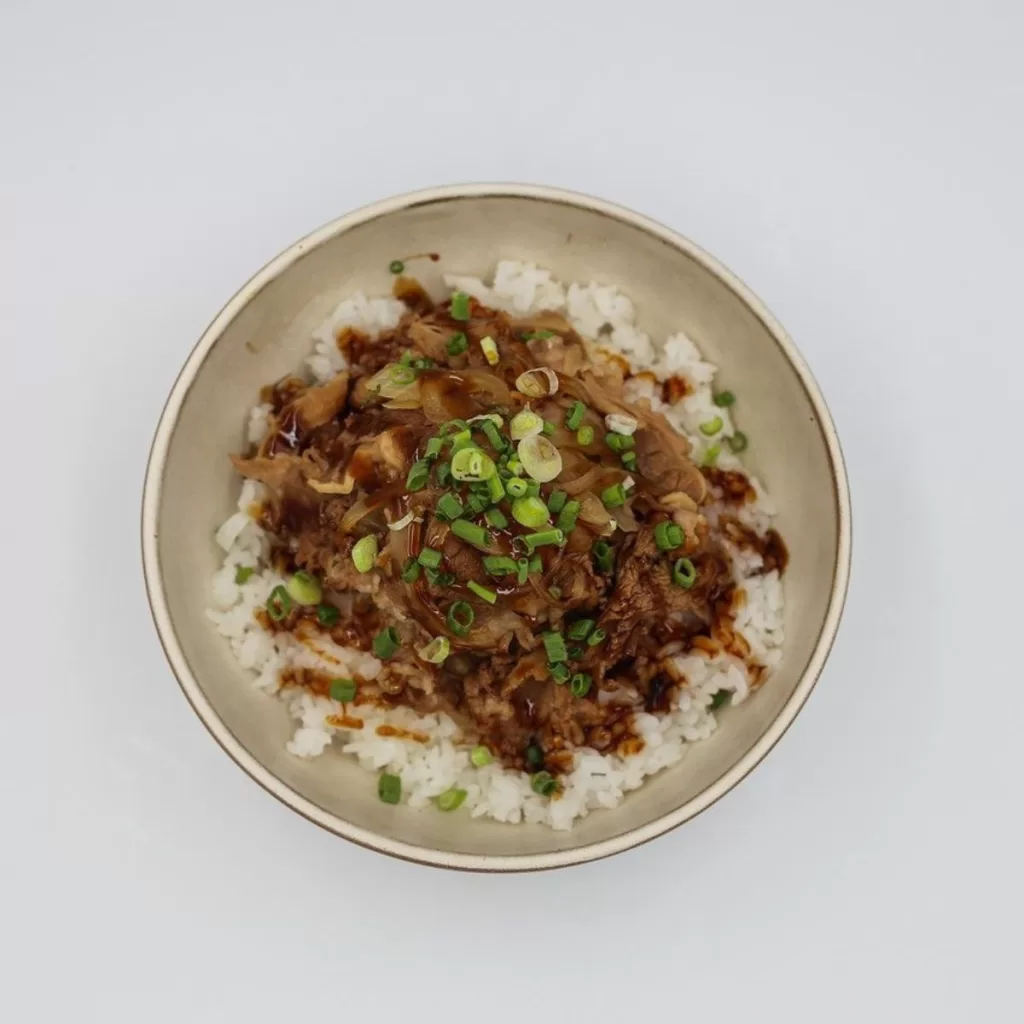
Gyudon, also known as beef bowl, is a popular and satisfying Japanese dish that consists of thinly sliced beef cooked with onions and served on top of a bowl of steamed rice. The name “gyudon” translates to “beef bowl,” and it has gained a reputation as a quick and filling comfort food in Japan. This classic dish provides a perfect balance of flavors and textures, making it a favorite among locals and visitors.
The main component of gyudon is the thinly sliced beef, typically made from cuts like chuck or ribeye. The beef is simmered in a savory and slightly sweet sauce known as tare, which is made from ingredients like soy sauce, mirin, sugar, and dashi (Japanese stock).
The onions are cooked until they become soft and caramelized, adding a delicious sweetness to the dish. The tender slices of beef and the flavorful sauce complement the steamed rice, creating a satisfying meal.
23. Gyoza
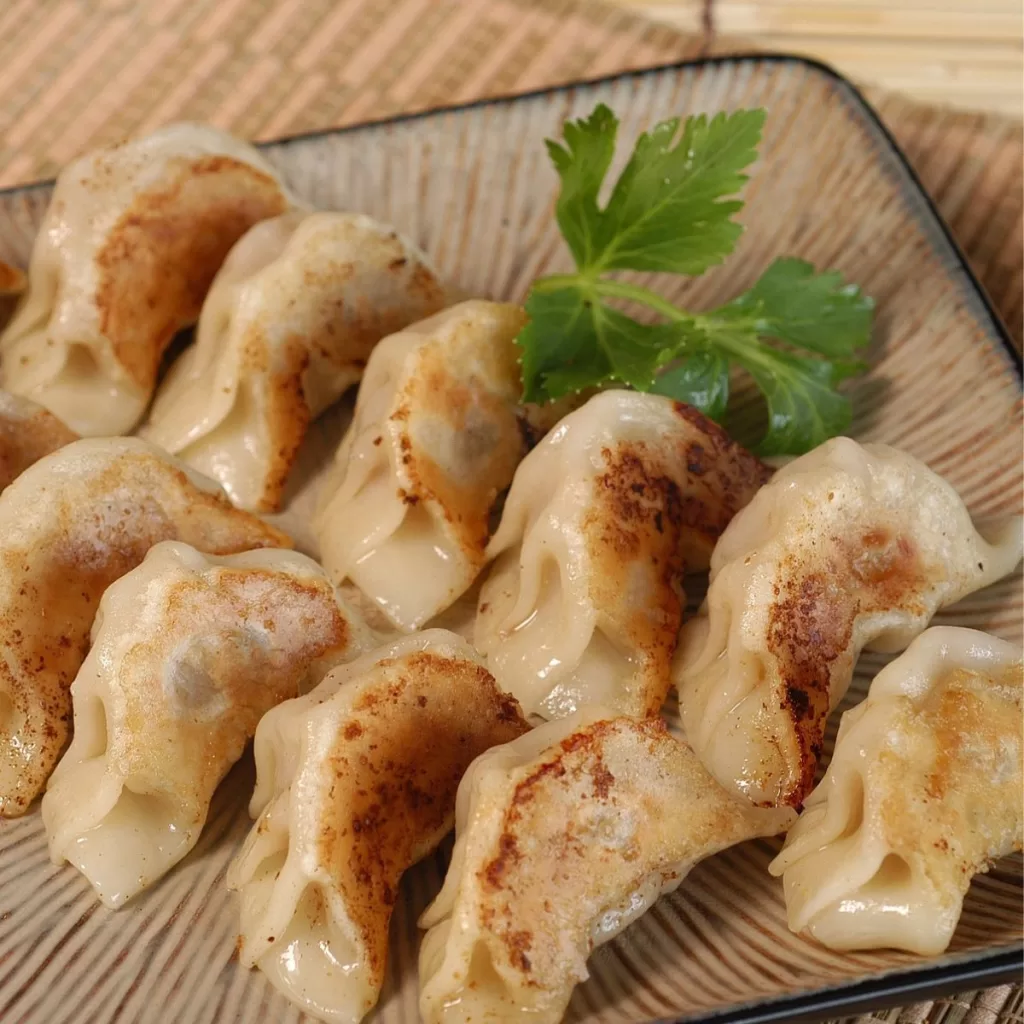
Gyoza is a popular Japanese dumpling that has its roots in Chinese cuisine. It is a versatile dish enjoyed as an appetizer, side dish, or even a main course. Gyoza typically consists of a thin dough wrapper filled with a mixture of minced pork, cabbage, garlic, ginger, and various seasonings. The dumplings are then pan-fried until crispy on the bottom and steamed to perfection, resulting in a delightful combination of crispy and tender textures.
Gyoza is often served with a dipping sauce made from soy sauce, rice vinegar, and chili oil. The sweet and tangy sauce perfectly complements the savory flavors of the dumplings.
Additionally, gyoza is often accompanied by a side of tangy and refreshing shredded cabbage or a bowl of steamed rice.
24. Shabu-Shabu
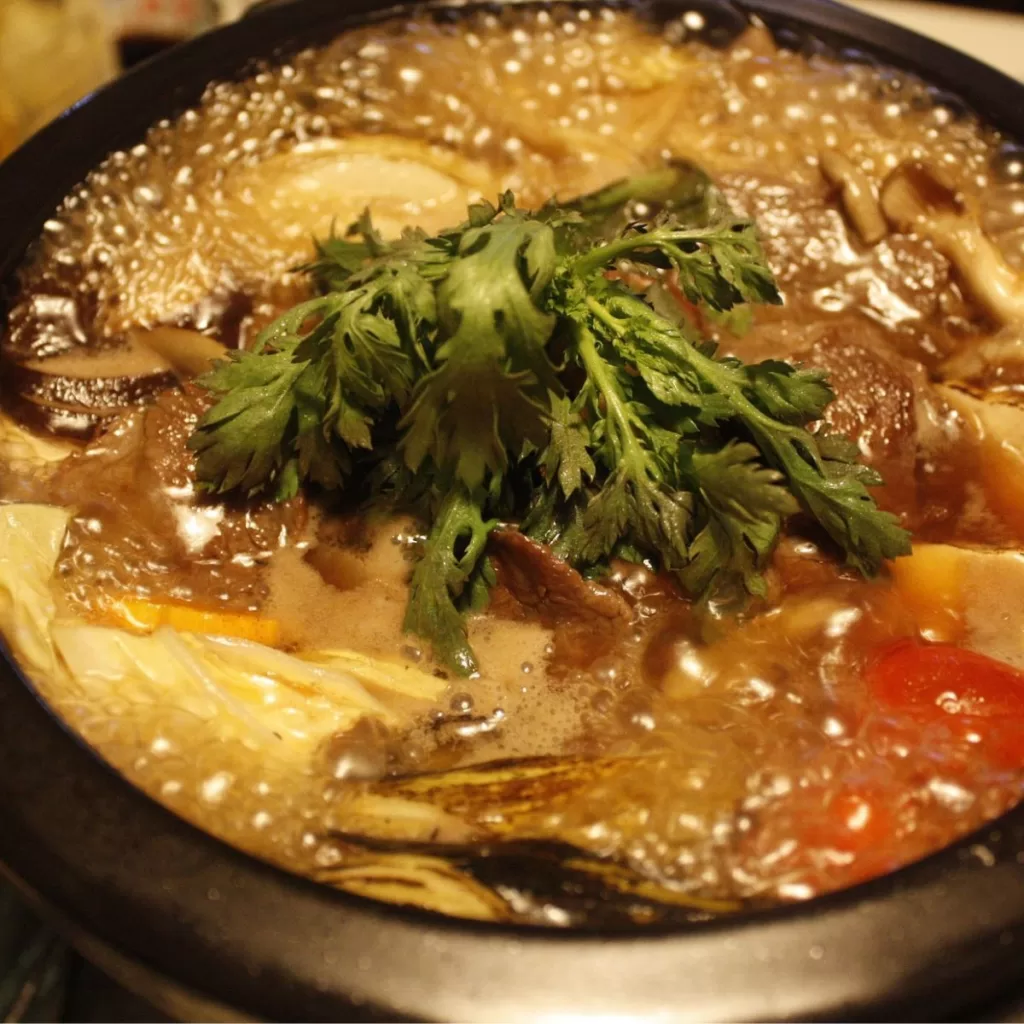
Shabu-shabu is a popular Japanese hot pot dish that offers a unique and interactive dining experience. This dish typically consists of a tabletop hot pot filled with a flavorful broth, accompanied by plates of thinly sliced beef or other types of meat, as well as an assortment of fresh vegetables, tofu, mushrooms, and noodles.
Beyond the delicious taste and interactive nature, shabu-shabu is often regarded as a healthy dining option. The focus on fresh ingredients, particularly vegetables and lean cuts of meat, makes it a nutritious choice. The light and nourishing broth is often made with ingredients like kombu (kelp) and katsuobushi (dried bonito flakes), which contribute to the umami-rich flavor of the dish.
25. Yakiniku

Yakiniku, which translates to “grilled meat” in Japanese, is a popular Japanese dining style that revolves around grilling bite-sized pieces of meat and vegetables at the table. It is often likened to Korean barbecue but has its own unique characteristics. Yakiniku restaurants typically feature tabletop charcoal grills, where customers can cook their own food to their preferred level of doneness.
The selection of meat in Yakiniku is diverse and can include various cuts of beef, pork, chicken, and even seafood. The meat is usually thinly sliced and marinated in a delicious sauce or seasoned with salt before grilling.
The grilling process enhances the natural flavors of the meat, creating a smoky and mouthwatering taste. Vegetables such as zucchini, mushrooms, and bell peppers are also grilled alongside the meat, adding a refreshing and healthy element to the meal.
26. Omuraisu
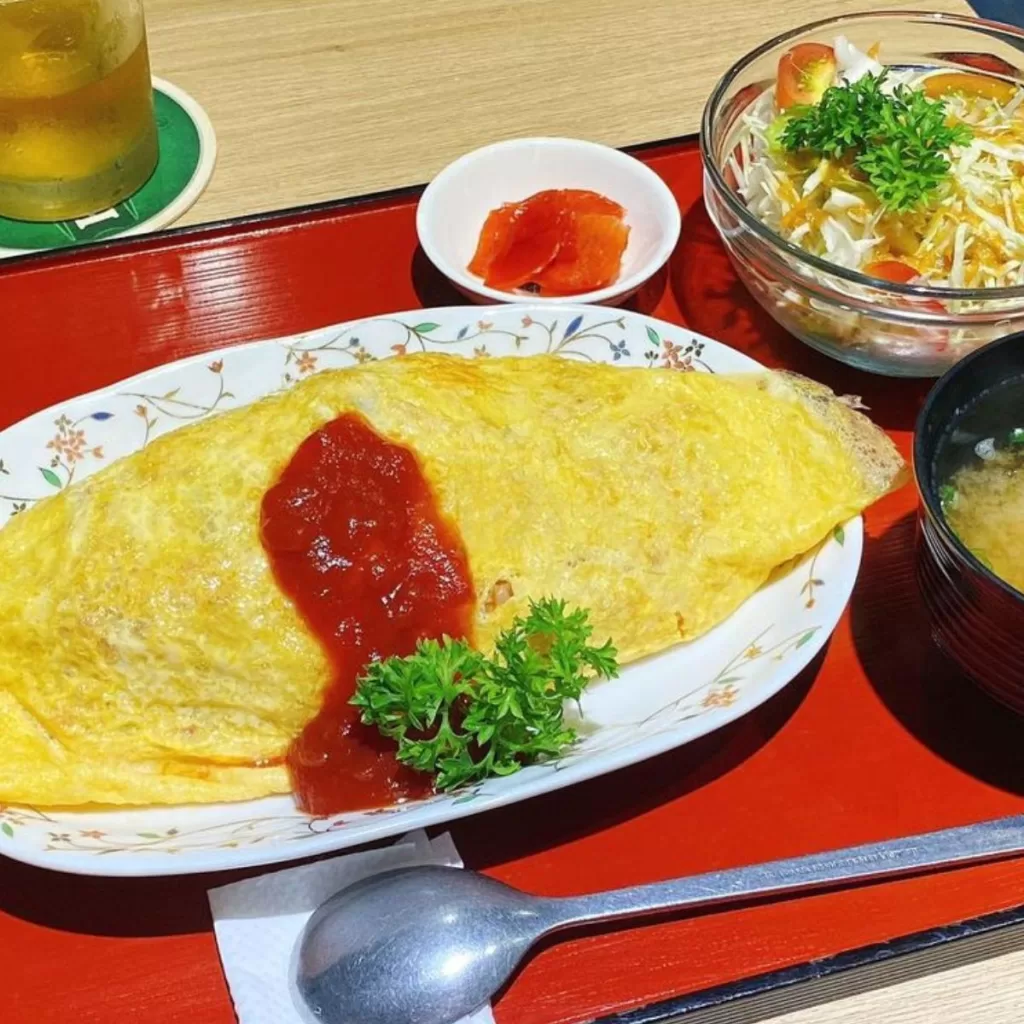
Omuraisu, also known as omurice, is a popular Japanese dish that combines Western-style omelet with fried rice. This unique fusion dish is a comfort food favorite among both children and adults in Japan. Omuraisu typically consists of a fluffy omelet wrapped around a filling of fried rice that is flavored with ketchup. The combination of textures and flavors makes it a satisfying and flavorful meal.
The fried rice in omuraisu is typically made using ingredients such as diced chicken or pork, onions, carrots, peas, and sometimes mushrooms. The rice is stir-fried with these ingredients and seasoned with ketchup, creating a slightly sweet and tangy taste. The fried rice is then placed in the center of a fluffy omelet, which is made by whisking eggs and cooking them lightly until they are still slightly runny in the middle. The omelet is then carefully wrapped around the fried rice, creating a visually appealing presentation.
Today, it continues to be a popular choice for those seeking a hearty and satisfying meal that brings back warm memories.